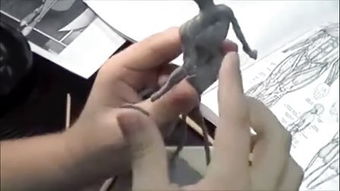Hypotonia: Low Muscle Tone Explained
Hypotonia, often referred to as low muscle tone, is a condition that affects the muscle strength and coordination in the body. It can be a result of various factors, ranging from genetic disorders to neurological conditions. Understanding hypotonia is crucial for those affected and their caregivers. Let’s delve into the details of this condition, its causes, symptoms, diagnosis, and treatment options.
What is Hypotonia?

Hypotonia is characterized by reduced muscle tone, which means that the muscles are softer and less firm than normal. This can lead to difficulties in maintaining posture, controlling movements, and performing tasks that require coordination. The severity of hypotonia can vary widely, from mild to severe, and it can affect individuals of all ages.
Causes of Hypotonia

The causes of hypotonia can be categorized into two main types: congenital and acquired.
-
Congenital Hypotonia: This type of hypotonia is present at birth and is often due to genetic factors, such as chromosomal abnormalities or genetic mutations. Examples of genetic conditions that can lead to hypotonia include Down syndrome, muscular dystrophy, and spinal muscular atrophy.
-
Acquired Hypotonia: This type of hypotonia develops after birth and can be caused by a variety of factors, including neurological conditions, infections, metabolic disorders, and injuries. Some common causes of acquired hypotonia include cerebral palsy, brain tumors, and spinal cord injuries.
Symptoms of Hypotonia

The symptoms of hypotonia can vary depending on the severity and underlying cause. Common symptoms include:
-
Difficulty in maintaining posture and sitting or standing up without support
-
Delayed motor skills, such as rolling over, crawling, and walking
-
Weak muscle tone and reduced muscle strength
-
Difficulty with coordination and balance
-
Swallowing difficulties and feeding problems in infants
Diagnosis of Hypotonia
Diagnosing hypotonia involves a thorough medical evaluation, which may include the following:
-
Physical examination to assess muscle tone, strength, and coordination
-
Neurological examination to evaluate brain and nervous system function
-
Medical history and family history to identify potential genetic or inherited conditions
-
Imaging studies, such as MRI or CT scans, to rule out structural abnormalities in the brain or spinal cord
-
Blood tests to identify metabolic disorders or infections
Treatment Options for Hypotonia
The treatment of hypotonia is tailored to the individual’s specific needs and may include a combination of the following approaches:
-
Physical Therapy: Physical therapy is a key component of treatment for hypotonia. It focuses on improving muscle strength, coordination, and mobility. Therapists may use various techniques, such as stretching, strengthening exercises, and balance training.
-
Occupational Therapy: Occupational therapy helps individuals develop the skills needed for daily activities, such as dressing, feeding, and writing. Therapists may use adaptive equipment and techniques to facilitate these tasks.
-
Speech Therapy: Some individuals with hypotonia may experience difficulties with swallowing and speech. Speech therapy can help improve these skills and ensure safe feeding and communication.
-
Medications: In some cases, medications may be prescribed to manage symptoms or underlying conditions. For example, medications may be used to treat seizures or to manage pain.
-
Orthotic Devices: Orthotic devices, such as braces or splints, can provide support and stability to weak muscles and improve mobility.
Living with Hypotonia
Living with hypotonia can be challenging, but with proper management and support, individuals can lead fulfilling lives. It is important for individuals with hypotonia and their families to work closely with healthcare professionals to develop a comprehensive treatment plan. This plan should be



